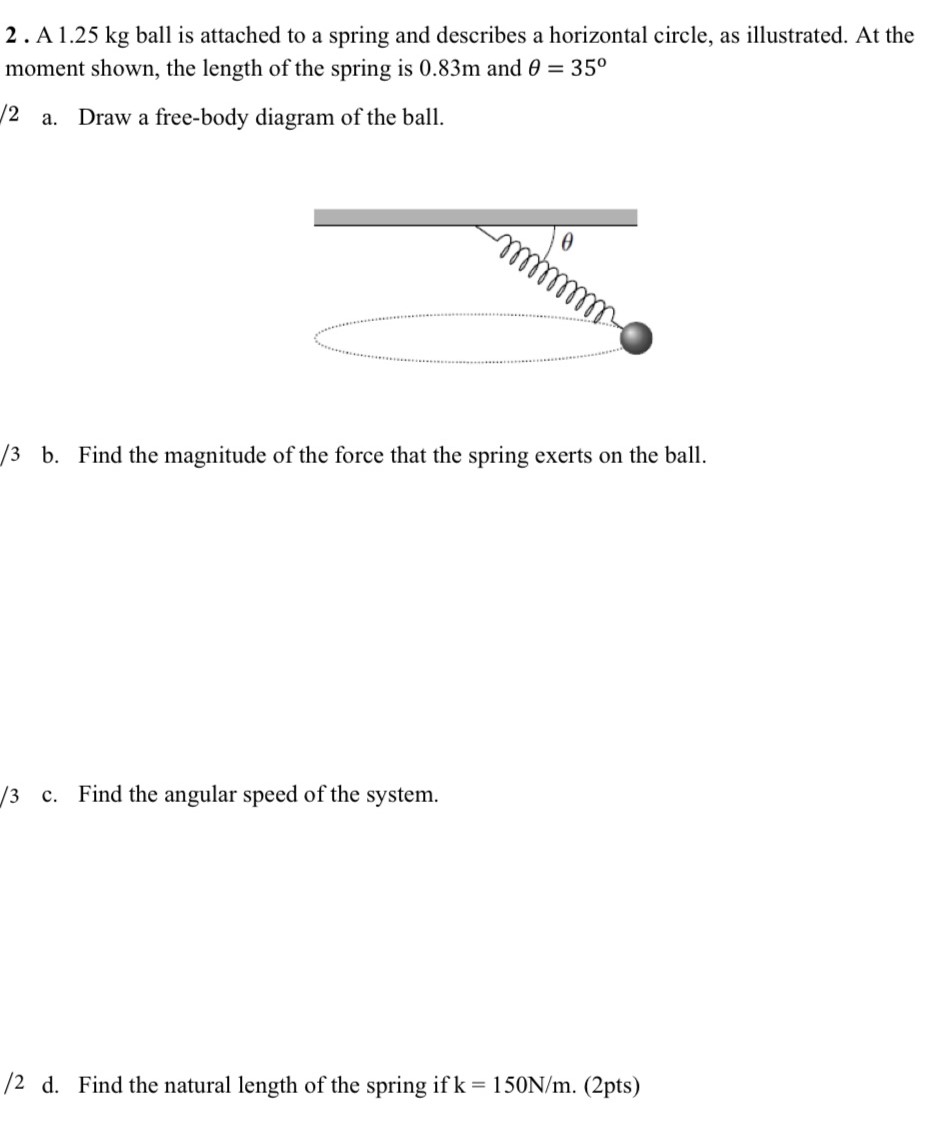2 . A 1.25 kg ball is attached to a spring and describes a horizontal circle, as illustrated. At the moment shown, the length of the spring is 0.83m and θ = 35∘ /2 a. Draw a free-body diagram of the ball. /3 b. Find the magnitude of the force that the spring exerts on the ball. /3 c. Find the angular speed of the system. /2 d. Find the natural length of the spring if k = 150 N/m. (2 pts)
